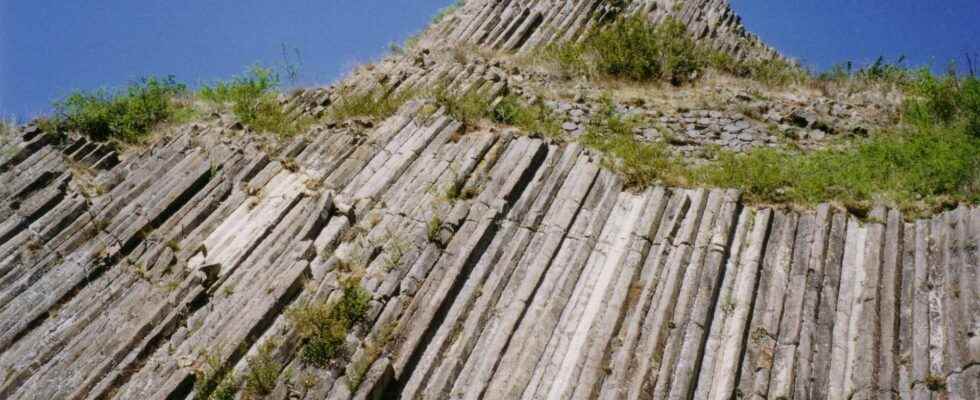You will also be interested
[EN VIDÉO] Geology of volcanic systems – an invitation to travel Interviews dating from 2009 with Georges Boudon, physicist at the IPGP, and members of the team studying the functioning of volcanoes, from the generation of magmas to eruptions. The vocation of IPGP films is to open the doors of laboratories and to accompany scientists in the world of geosciences. This film is part of a series of 14 short format films which are an invitation to travel from the cosmos to the center of the Earth. Design & production: Medi@terre, IPGP – 2009
Auvergne is well known for its massifs and other formations of volcanic origin. Visiting the region is thus an opportunity to discover an impressive landscape, shaped over millions of years by the activity of numerous volcanoes. The last eruption only dates back 6,000 years !
If volcanoes, like Mont-Dore or those of the Puys chain are naturally the emblematic structures of this magmatic activity which has long affected the center of France, there are many other equally impressive witnesses. This is for example the case of basalt organs. Result of the cooling of lava flows, it is possible to find them everywhere in the region. Among the most impressive, those in the village of Usson are really worth a visit.
The organs of Usson, witnesses of volcanism dating back more than 18 million years
In the Puy de Dôme, near Issoire, the village of Usson is indeed built on an old basalt peak. The village, classified among the most beautiful villages in France, was notably the place of exile of Queen Margot for 19 years.
The basaltic organs are easily accessible by a path, on the side of the hill located to the south of the village. These large hexagonal columns, several meters high here and which form the volcanic peak, are of totally natural origin. This surprising geological formation is linked to a phreatomagmatic eruptionresulting from the contact of lava with water, having taken place about 18 million years ago.
The region was then a vast lacustrine zone, in which the magma made its way. The volcanic activity that gave rise to the hillock of Usson is linked to the volcanic episode of the Limagnes du Val d’Allier. The beginning of this volcanism is dated at 25 million years. It is thus older than the volcanic events that gave rise to the volcanoes of Cantal, Mont-Dore or those of the Puys chain.
The organs of Usson are thus the remains of the deep part of an ancient volcano which has now disappeared under the effect of erosion. The prismatic organs forming the mound are more precisely a dikethat is to say the chimney plant that fed the volcano.
An ancient volcanic conduit now highlighted by erosion
During its rise in the conduit, the lava begins to crystallize under the effect of cooling. However, in doing so, the liquid magma undergoes a thermal contraction which leads to a decrease in volume. It is precisely this phenomenon of contraction which will give birth to organs. The formation of hexagonal structures results from the distribution of contracting stresses within lava, the prisms forming perpendicular to the cooling surfaces. Thus, the vertical organs of Usson come from a cooling by the top, and not on the sides of the chimney. The regularity of the prisms is also associated with a rather slow cooling.
The hexagonal geometry is related to the fact that the hexagon (six faces) is the optimal geometry for the use of space during crystallization. Nature also regularly uses this geometry, which is found in particular in the slits of desiccation clay, but also in the cells ofbees !
While they were originally buried, the organs of Usson today form a mound. This small mount is the result of the erosion of the rest of the landscape and the relief by inversion of this geological formation which is more resistant to the elements.
As you walk through the village, you will certainly notice the intense use of prismatic blocks for the construction old buildings and more particularly the castle. The mound has indeed long been used as a quarry.
Special offer: for Father’s Day, offer the best of Science!
Your father is a great science enthusiast and unusual discoveries? And if you offer him a superb scientific exploration in paper format? Benefit from -20% on the Mag Futura (special offer: €15 instead of 19 €): 220 pages to explore 4 scientific issues that will shape our future!
Mag Futura is:
- 4 major scientific questions for 2022, from the Earth to the Moon
- 220 pages, 60 experts: no fake news, just science
- Home delivery with electronic gift card
- An independent scientific media
Interested in what you just read?
